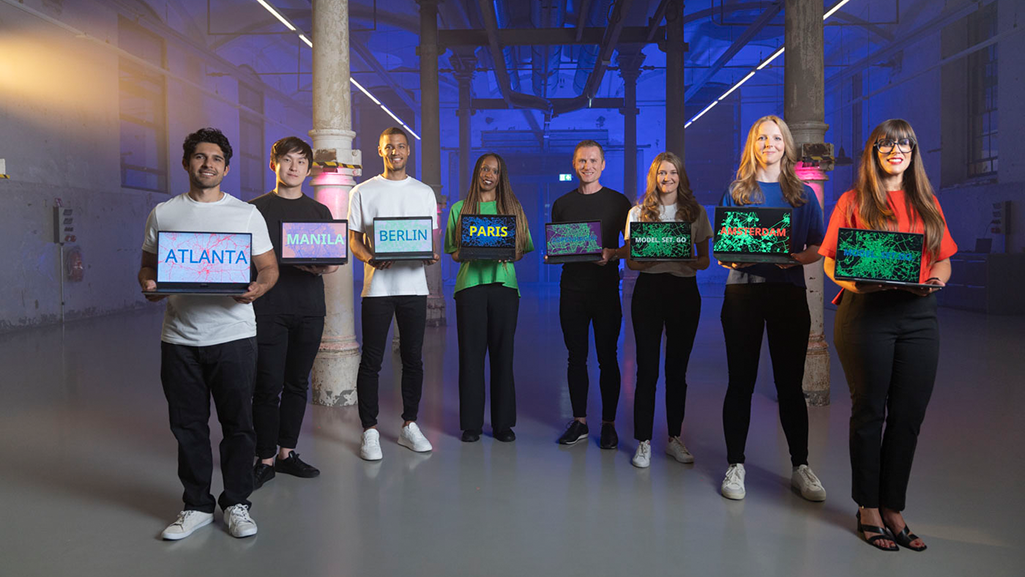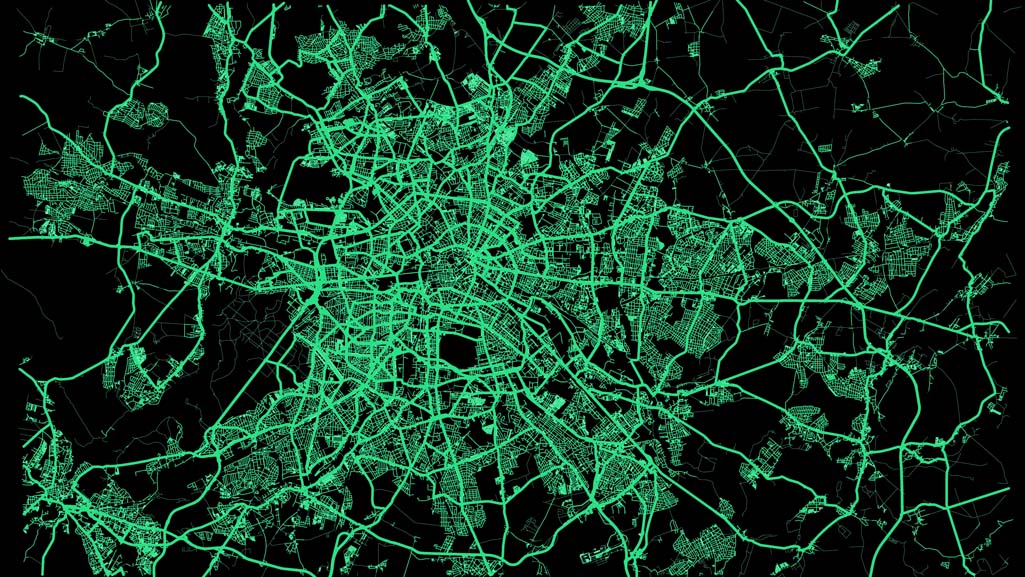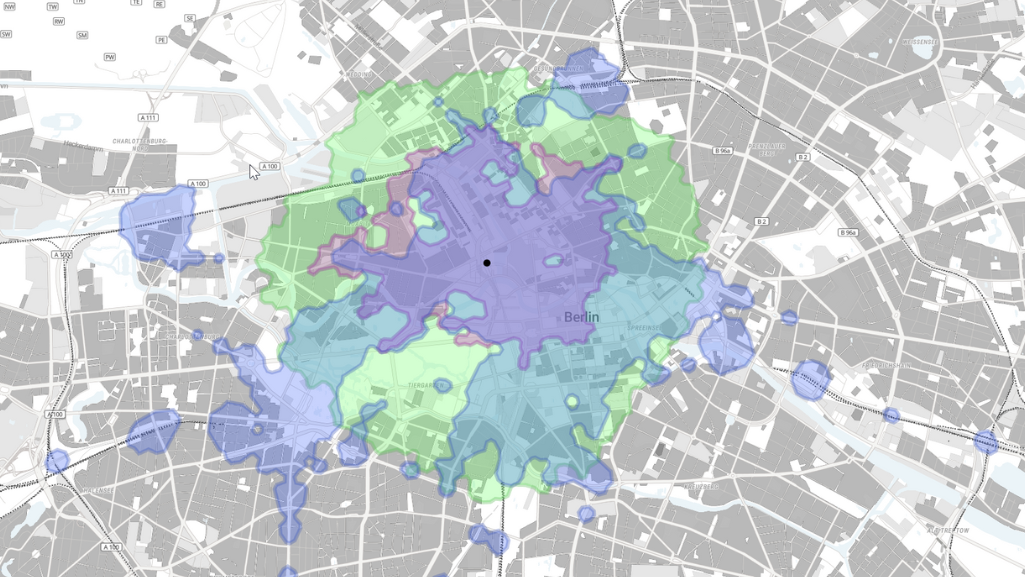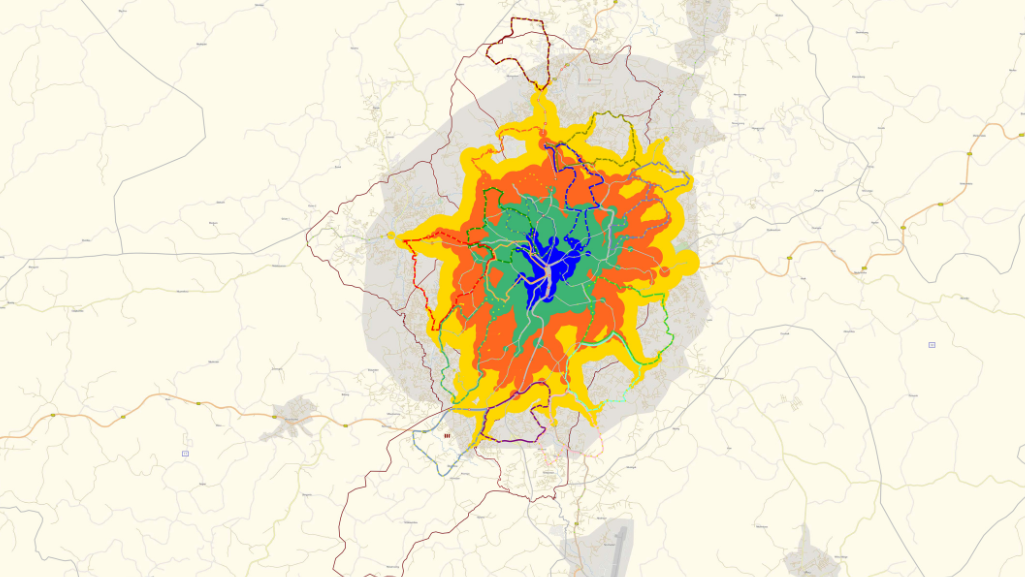PTV already succeeded in automating the building of transport models. Using a method based on machine learning (ML), basic models for any city in the world can be generated in just a few days. The Model2Go process now combines smart automation technology with details about the origin and destination (OD) travel demand for any desired area. Typically, takes several weeks or months to manually build a supply model that accurately represents the supply of cars, public transport, bicycles and pedestrians, i.e., the movement of all modes of transport in a planning region at a given point in time (the base year).
What are transportation models?
Traffic models are important tools for evaluating urban and transportation planning measures. As digital twins of the real traffic and land use system, they map the numerous complex movement patterns and decisions of people and thus the level of demand for mobility in relation to the capacities of the traffic networks. In this context, traffic modeling is not limited to automobile traffic, but deals with all modes of transportation (multimodal). Traffic models are used to model the daily mobility of the entire population in order to obtain forecasts of the demand for transport in the event of a change in the general conditions, such as higher prices, a reduction in parking space, or the introduction of a national speed limit.
Resource-efficient technology right out of the box
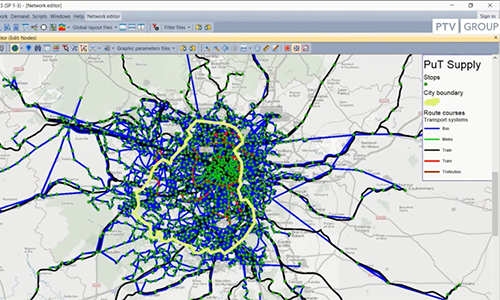
With PTV Model2Go, supply models can be generated for any city or region worldwide in as little as one week. The cloud-based process combines intelligent automation technology with a variety of data sources. Examples include maps and data from renowned providers such as TomTom, HERE or OpenStreetMap, along with GTFS public transport timetable data. The outcome is not only a considerably faster and more cost- and resource-efficient automated model generation but also one that is significantly less error-prone. This saves users from time-consuming empirical data collection and provides them with a ready-made basis for both simple and complex use cases. These include multimodal accessibility analyses, site assessments, and all common traffic and mobility studies. A series of Live Sessions makes it easier to get started with the system.
The revolution in automated transport models
Udo Heidl, Senior Expert Modelling, knows: “Many municipalities face a shortage of both know-how and resources, compounded by overarching cost pressures and a shortage of skilled workers. Consequently, transport models often go underutilized as a valuable, data-driven foundation for decision-making. Additionally, the reluctance to update existing models persists due to the associated high costs. With Modell2Go, the development of a supply model is reduced from several months to just a few days.”
Heidl adds, “For example, the new transport demand model for the City of Hamburg will be developed based on Model2Go. Our tool empowers companies and public authorities to efficiently and meaningfully plan for the future of mobility in a short timeframe.”
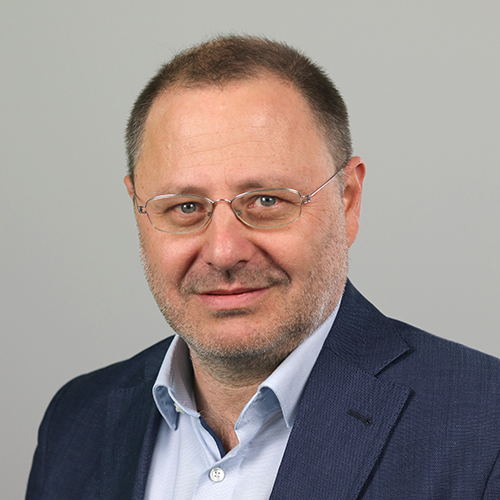
Connected mobility fuels the traffic revolution
As seen in Hamburg, the challenge of modal shift has been a prominent issue in numerous cities globally. Just this summer, the Hanseatic city, self-proclaimed as “the city of short distances“, released the current status of the modal split for the entire city. The objective is to cultivate a livable city and region through interconnected mobility, , addressing not only safety concerns but also making significant contributions to climate protection and energy efficiency.
“Model2Go is a perfect fit here,” says Heidl, “Especially in contentious and emotionally charged discussions surrounding the traffic revolution, data- and model-based analyses offer a crucial foundation for argumentation and promote understanding. Within the virtual environment of a transport model, it is possible to analyze the effects of establishing a speed reduction zone, evaluate the feasibility of extending a tram line into a housing development area, identify optimal locations for new car-sharing parking lots, or understand shifts in mobility behavior when a new bike path is introduced. This enables us to make a substantial contribution to sustainability: Leveraging automated transport models, transportation planners can develop modern, cross-modal mobility concepts and ultimately turn them into sustainable solutions.”
